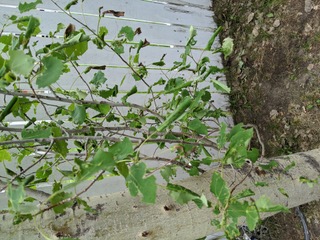
Leafroller also called Leaftiers
Cosmetic
Leafrollers or leaftiers include many different species of moths whose larvae roll, fold or tie together leaves of trees, shrubs or perennials.
Leafroller moths are an important food source for many species of predator and parasitoid insects, as well as birds and bats. Moths are also important pollinators of many species of native and non-native plants.
The larger boxelder leafroller (Archips negundana) is one species of leaftier moth common in the prairies. The City of Edmonton reported that: “Established Manitoba maple trees in the Edmonton area that are completely defoliated over several consecutive years appear to recover and continue to grow normally. These trees have the ability to compensate for the caterpillar defoliation by producing a second set of leaves so that they appear nearly normal by the end of the summer.”
Control
No control is needed as the damage is minor and does not typically harm the tree.
Small infestations can be reduced by unrolling and hand picking the affected leaves.
Take care not to defoliate the tree as green leaves still photosynthesize and make food for the plant.
Sources
Canada, Agriculture and Agri-Food. Leafrollers and Leaftiers of Poplar. 10 June 2014, https://agriculture.canada.ca/en/agricultural-production/crop-protection/diseases-and-pests-agroforestry/leafrollers-and-leaftiers-poplar.
‘Landscape Pests-Leafroller and Leaftier’. Pacific Northwest Pest Management Handbooks, 22 Oct. 2015, https://pnwhandbooks.org/insect/hort/landscape/common/landscape-leafroller-leaftier.
Larger Boxelder Leafroller | City of Edmonton. https://www.edmonton.ca/programs_services/pests/larger-boxelder-leafroller. Accessed 5 Dec. 2024.

